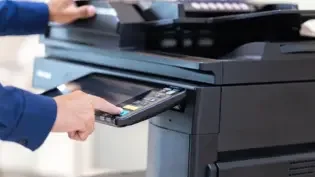Home > Finance > Working with Lenders >
Learn the Language of Merchant Cash Advances
By: Steve Bernardone

For many business owners, merchant cash advance jargon can seem like a foreign language. With a little bit of explanation, however, you can be using the words like a pro and bantering confidently with people in the finance world. If you are considering a merchant cash advance or have never heard of this financing option, here is some brief background information, as well as some terms you will want to know before consulting a representative.
A merchant cash advance is an alternative financing option which allows a merchant to receive a lump sum payment in exchange for an agreed upon percentage of their future credit card receivables. Common uses for a merchant cash advance include: seasonal inventory financing, renovations, and a host of other business-related initiatives that require injections of capital.
WITHHOLDING
In the context of a merchant cash advance, withholding is taking a percentage of a business’s credit card sales to pay for an advance. Merchant cash advance companies use this approach to ensure that they receive their portion, rather than relying on the merchant to make a monthly payment. Typically, financing companies use one of three withholding methods to repay a merchant cash advance:
Split Withholding
In split withholding, the credit card processing company deducts the payment and forwards it directly to the cash advance company. This approach allows both the MCA company and the merchant to receive their earnings immediately, so it is typically favored over other withholding methods.
Trust Bank Account Withholding
Trust bank account withholding, also called lock box withholding, requires the credit card company to deposit all proceeds into a trust account that is under the supervision of the financing company. The MCA provider deducts its portion before transferring the remaining amount to the merchant via ACH, usually after a one-day delay.
ACH Withholding
ACH withholding is a method in which the merchant cash advance company receives credit card receipts and withdraws its percentage from the merchant’s bank account via ACH transfer. The disadvantage of this method is that it can result in a negative bank balance if the company spends its earnings before the MCA lender can deduct a payment.
BATCHING
The collection of payments before processing them is known as batching. Many credit card companies use batching when paying for a merchant cash advance rather than deducting money from each transaction and forwarding the payments individually. The credit card company then sends the funds once per day, thus reducing the work for them.
LIEN
A lien is a right to a person’s property that is possessed as a result of an unpaid debt or a loan agreement. Lending companies usually place a lien on property when it is used as security for a loan, and the lien holder has the right to sell the property to pay for the loan if the borrower defaults. Although many types of business financing require a lien, this is not true of merchant cash advances.
UNSECURED BUSINESS FINANCING
Unsecured business financing is funding given to a business without any collateral required. All that a business owner needs to do to receive this type of financing is sign a contract, and the lender cannot place a lien on the borrower’s property in exchange. A merchant cash advance is one type of unsecured business financing, and an unsecured business line of credit is another kind. Most unsecured business financing requires the borrower to have excellent credit; however, this is not always the case with a merchant cash advance.
What other terms have you struggled to understand in the finance world?
Published: August 22, 2013
5626 Views
5626 Views












